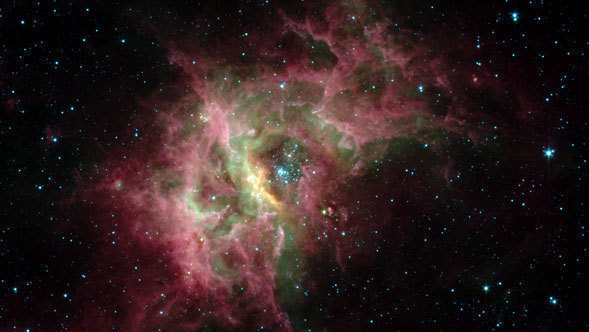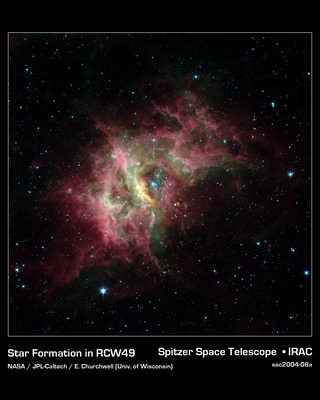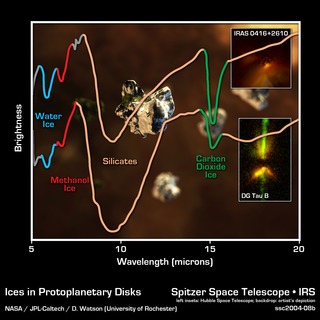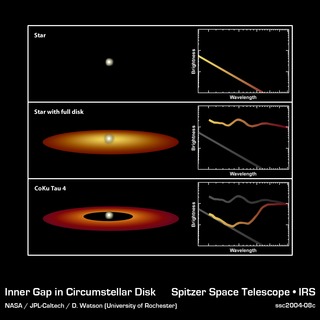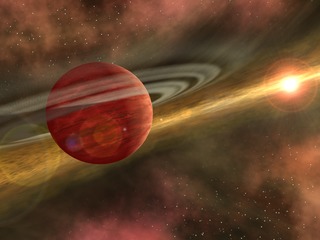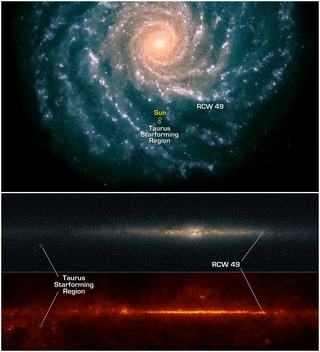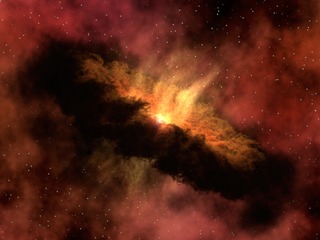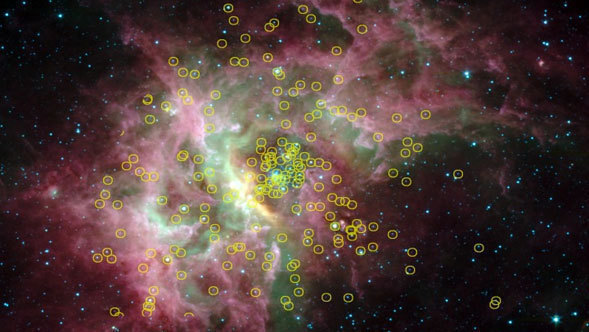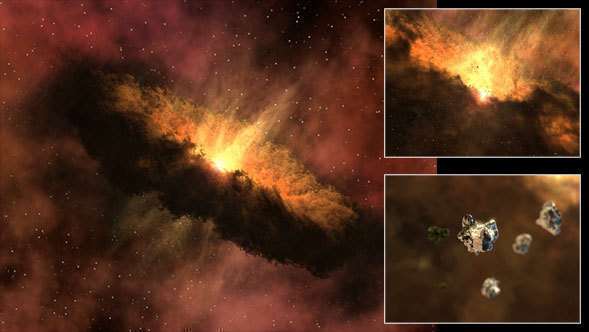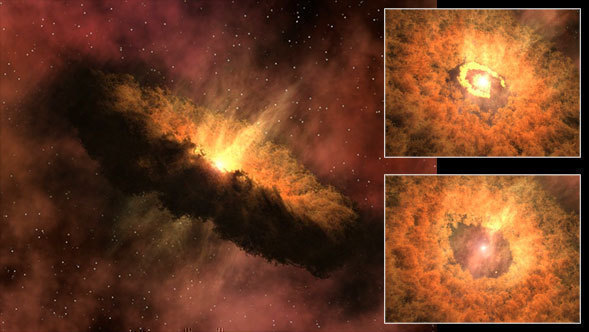Spitzer Sheds Infrared Light on Hundreds of Newborn Stars
Science Animations Video • May 27th, 2004 • ssc2004-08v1
Observations from NASA's Spitzer Space Telescope reveal hundreds of newly forming stars in the nebula RCW49, located 13,700 light-years from Earth. Operating at wavelengths of light longer than those seen by the human eye, Spitzer can clearly see these young stars, or "protostars," which are hidden from visible views in shrouds of dust.
This animation shows what a human eye might see if it could be re-tuned to see different parts of the electromagnetic spectrum. It shows RCW49 in shifting wavelengths of light, beginning with visible views and ending with Spitzer infrared observations. The picture changes in hue from red to blue, then fades from sight, as new infrared features appear in false colors. The first false-color infrared view is from the near-infrared Two Micron All Sky Survey (2MASS) mission and shows wavelengths of 1.3 to 2.2 microns. The second false-color view is from Spitzer's infrared array camera and covers wavelengths of 3.6 to 8 microns.
While the nebula is present in all of these views, hidden and buried features emerge at Spitzer wavelengths. Reddish stars pop into view and the full bloom of the extended nebula appears in the final Spitzer image.
The hundreds of yellow circles appearing on the image indicate the locations of the protostar candidates identified by comparing the mid-infrared Spitzer image to the near-infrared 2MASS image.
Video Credit: NASA/JPL-Caltech/R. Hurt (SSC-Caltech)
